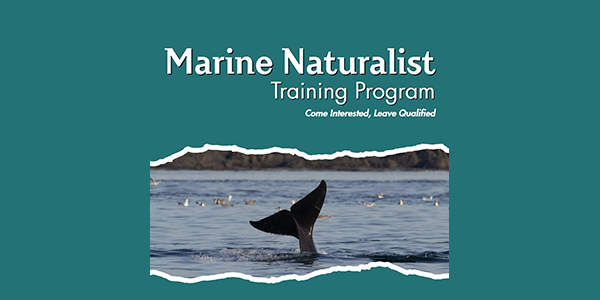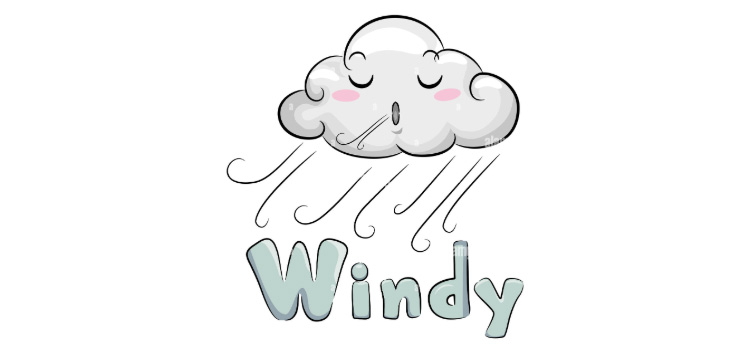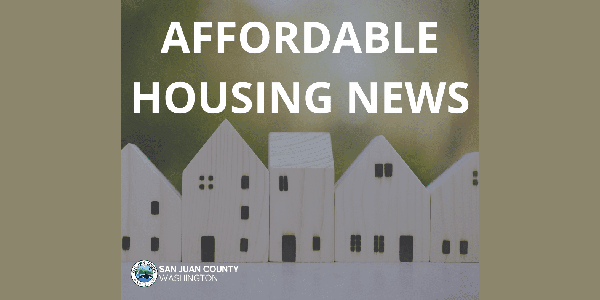— from Joe Symons —
Someone seeking refuge is a refugee. My dictionary defines refuge as a condition of being safe or sheltered from pursuit, danger, or trouble. A refuge is also something providing shelter: the family came to be seen as a refuge from a harsh world.
Prior to 1970, one might imagine that those who chose to live in the islands of the Salish Sea (most of which now are called “San Juan County”) did so because of the easy availability of land and work. Few moved and worked here to escape oppression; there was fishing, forestry, fruit, and other resource-based work to make a sustainable living. The Census began tallying the population here in 1870; since then, for 100 years, the population barely changed—it was always less than 4000 for the entire county.
Beginning in 1970, the growth in the population of these islands earned—for 40 years—the distinction of being the fastest growing county in the state. Since 1970, the population of the county has more than quadrupled.
Who came? and why?
I’d argue that those who came, including me (who first stepped on Orcas in 1968 and bought property here in 1972), are refugees. We might not feel comfortable using that term, especially in light of the growing and enormously challenging international refugee crises popping up like measles all over the world. If we are refugees, then, as my mother would have said, “We’re going to the refugee camp first class”.
The Titanic might serve as a metaphor for this migration, because migration it is. Our growth rate was not and is not due to the net balance of the birth rate over the death rate. The Titanic carried people from one world to the other, though due to unconscionable hubris the “world” that many migrated to was the one following death. Of course that was not the intention of the passengers and surely even the deranged captain. The Titanic, like most cruise ships, had different levels and layers of passengers, from those who had bunks near the engine room to those who had every possible amenity.
So it has been that the migration into these beautiful islands has had different economic passengers, at least during the first decade or two of this Trip to the New World. Logging, fishing, and fruit, all local resource-based activities, gave way to tourism and construction. A great deal of that construction was for second (or more) homes. The local economy responded to this migration as bees respond to flowers: More restaurants, more kayak and whale watching tour services, more retail (read: tourist) shoppes. Along with that growth came associated infrastructure services: water, sewer, power, phone, county government, schools, medical, entertainment.
That’s the standard story. But, like the decades old Wendy’s ad, where’s the beef? Who came and why?
Who came is easy: for the most part they were, and are, refugees. Why they came is also easy: they either were willing to downgrade their living standard in order to fulfill their refugee (remember: they are/were seeking refuge) yearning or they had the funds to become a first class refugee. In the last couple of decades, the refugee entrance requirements have gone up. We’ve always had the lowest wage rate of any county in the state. No one came here for jobs or to get rich. It was tough to be a migrant in the 70s if you didn’t come with at least some money. The bar has been rising ever since.
Refugees? From what? Recall that a refuge is a place that is safe, that is sheltered from danger and trouble. If there is danger and trouble, and you don’t like it and you have either the money or the tenacity to migrate, you move. America has no resistance to wanderers. We’ve been migrating since Daniel Boone and Fredrick Jackson Turner. Perhaps it is “the pursuit of happiness,” although I suspect that migration here in the islands is for shelter, for a sanctuary, for a place that is NOT in perpetual, accelerating, disruptive motion.
The Growth Management Act was passed by the state Legislature in 1990 because so many people were migrating into Washington that the chaos level of providing infrastructure was simply too high. But why were those people then—and now—moving into Western Washington? Almost none of them moved to central or eastern Washington.
They were seeking shelter. They were tired of the challenges of urban growth in other parts of America (as you know, principally California) and wanted something calmer, more refreshing, simpler, more beautiful. Back then, Seattle was pretty attractive. Bellevue was slightly more than a hamlet. Microsoft didn’t get started until 1979.
As people and money flowed into the Puget Sound region, what was relatively calm and serene (think Garrison Keilor’s “Lake Wobegon: the town that time forgot”) changed. For those who stumbled across the San Juans then (and now), the apparent simplicity and beauty and small scale and island nature manifested like a perfect combination, a perfect storm of convergence that animated the psyches of at least two of the passenger classes: those without money but with dreams, and those with money who wanted at least an occasional piece of the sanctuary refreshment. Those without money have basically always been in servitude to those with money: building and servicing their homes, serving them food, repairing their cars, and for some of those who had the ability and desire to move here full time, teaching their kids.
Hands down this is a sweet place, so far, to raise your kids and be a member of the community. Basically anyone who chooses to live here, however they do it, has a sense of having arrived, even if not via first class.
The question is: how do we preserve the sanctuary? At some point as more refugees enter this sanctuary, the quality of the shelter degrades. Those who live here full time have the opportunity, and the responsibility, to manage the sanctuary. Were this a monastery, they’d be the monks. Were this a park, they’d be the rangers. Were this an actual refugee camp, they’d be the United Nations High Commissioner for Refugees. We don’t have to look far to see the impact of actual (not first class) refugees pouring out of troubled areas in Africa and the Middle East into Europe trying to get to shelter from pursuit, danger, or trouble.
But it’s not a monastery, a park or a refugee camp. It’s a county. Those who live here are voters as well as taxpayers. They can manage the sanctuary, but only if they speak up.
Bob Dylan captured the feeling of waiting too long, a regret, in one of his most famous songs. Here’s the last stanza:
Well I’m living in a foreign country but I’m bound to cross the line
Beauty walks a razor’s edge someday I’ll make it mine
If I could only turn back the clock to when God and her were born
“Come in,” she said,
“I’ll give you shelter from the storm.”
It takes work, wisdom, attention, and action to maintain and preserve the refuge. My guess is that at heart, the vast majority of those full time residents reading these words recognize the deep calling that brought them and keeps them here. That calling is to and from your soul.
You have arrived. You don’t want to migrate again. Share your story of discovery and redemption. Speak to save the magic for your loved ones, your community, and the ones to follow.
**If you are reading theOrcasonian for free, thank your fellow islanders. If you would like to support theOrcasonian CLICK HERE to set your modestly-priced, voluntary subscription. Otherwise, no worries; we’re happy to share with you.**








There was much (and heated) discussion on Waldron Island when the fate of the Garry oaks on Point Disney came under consideration. Garry oak represented one phase of the history of Waldron, but so did the camas planted by Tribes passing through. To which time in history should the clock be turned back? And why?
The same is true for the rest of the county. Each of us arrived at a different time, and so gained a different idea of what constitutes a sanctuary. Those arriving today see the present level of population, the present level of business, the same intrusions on natural systems and creatures, as what should be preserved, while at the same time seeking the benefits of the world we say we want to escape: electric power, telecommunications, better and safer roads (adding more impervious surface and causing more runoff), more sophisticated medical facilities, with economic opportunities in construction and real estate (the more and rapid turnover of real estate, the more Realtors and the county profit).
This last item is a powerful economic force that both sustains valuable skills and necessary incomes, and threatens community by commoditizing both community (“Buy in this nice neighborhood! The neighbors are so nice!”) and nature (“Water views, space that can be cleared for a tennis court and divisible into two lots!”). Looking at a map of all the parcels that can already be made by legal subdivision under present land use ordinances should convince anyone that preservation of either nature (Garry oaks or camas?) or community (Williamsburg or as it was when each of us arrived?) is illusory. Any vote to prevent development out to that extent would be simply re-enactment of the “last man in the lifeboat” syndrome, destroying both the shelter or refuge quality of our county, and cast a negative quality upon our community because we would identify our community by who we aren’t, and would cripple the only two major industries that today provide economic life.
We are squeezed by economics because our county no longer produces enough exportable goods. We import virtually everything. Many Waldron islanders were fisherman when we arrived in 1972, but no more, though Waldron continues to be self sufficient in vegetables and fruit. The county is forced to attract outside income and capital, therefore tourism and real estate. We now are part of the 21st century, not even the 20th, from which there is neither technical nor cultural escape.
In addition, one important element is missing from Joe Symon’s lyrical and articulate letter: our struggling middle class, those whose ambition and skills are the essential element in our post-agrarian society and who for lack of other opportunities, have crowded into the two most maligned (see above) but nevertheless our most necessary industries. Our unbalanced economy is why both our lower and middle classes are struggling and finding that our county is not, or is no longer, the refuge they had sought, leaving us with estates and their support staffs, and tourism. We must do better than that.
But Bob Dylan’s words are apt. Beauty does indeed walk a razor’s edge, a line as impossibly narrow as the Tao of Lao Tse. The past is not an option. We are fated to go forward, not to preserve but to foster a safe, healthy, peaceful, economically balanced, and yes, beautiful sanctuary into the inescapable future.
Immigrants? Refugees? Sanctuary seekers? They’re just words used to describe people who move from one place to another.
The one important distinction, though, is whether or not the immigrants, refugees, or sanctuary seekers arrived legally (according to existing law) or whether they sneaked in.
While I am pleased to be living in a sanctuary, I am not pleased to baldly accept people who came illegally to seek that sanctuary’s protection.
Excellent Guest Ed, Joe Symons – your writing here has been missed as of late
@Steve Henigson; not sure what your comment has to do with Comp Plan planning and questions about growth, but I challenge anyone who’s against “illegal” immigrants (who are doing service jobs that many people here won’t even do!) – to tell me that their own parents and grandparents didn’t come here “illegally.” My grandparents did – by boat – and I bet yours did too. Sanctuary needs to include the people you refuse to “baldly” accept, whether you approve of them or not. If your relatives were immigrants, then what you’re speaking would be considwered bald hypocrisy.
Do you also think it’s right that these people can be given a social security card, pay into a system they will never be able to benefit from, then get deported and our government doesn’t return these monies? I don’t! Have you been to the countries and parts of the countries these people are trying to escape? It isn’t just economics driving them out – it’s repressive regimes, ethnic “cleansing,” pirates, and other gulags.
Back to the topic at hand: Joe’s well written Guest Ed and Bill Appel’s points that he makes in his comment:
Yes, Bill. People coming now have a different standard of paradise than those of us here from long times ago have – to our minds, a much degraded one, but still you make points we cannot ignore, and questions we need to answer in determining if the growth wished by the newer people and younger generations IS sustainable, what health risks are we enduring with all the EMF’s, and can we do better? It will be young minds who grapple with these issues and hopefully can solve some of them. I’m of the opinion that you CAN’T have it all – you have to choose, because if you degrade and destroy the supporting earth and what’s on it, humanity will necessarily become extinct.
The important discussion we are NOT having, concerning how we wish to grow (or not) locally, isn’t only about quality of shelter (it’s gone down, prices have gone way up) , or affordability for the have-nots (who are willing and have been willing all along to sacrifice some things for the benefits of other things to live here); it’s quality of life that’s sustainable because it limits growth and respects actual carrying capacity – should something go wrong. And much is going wrong, due to the assaults on ecosystems and biomes that make all of our lives possible in paradise and anyplace else. Planning for 20 years out is not long-range enough; it’s stalling and avoiding addressing the larger inevitable questions that we should have grappled with decades ago.
On the front page, center, of yesterday’s Seattle times was this article entitled: “Stormwater pollution killing coho before they can spawn.” We are killing salmon with our lifestyle, destroying the balance of the food with our cars. People say tourism is a “clean” industry. Not if our automobile load doubles as our population does each summer. Where will all that stormwater go? One place will be Fishing Bay, where the outflow pipe is which is supposed to carry Eastsound’s stormwater. Fishing Bay is the only place in the UGA with eelgrass beds and the potential of luring salmon. But what of the creeks – what are we asking them to do when we can’t handle our stormwater and keep building impervious surfaces – roofs, roads, parking lots, gravel trails, lawns?
With property ‘rights’ come responsibilities to steward a place, not use it up, crap it up, poison it, and move on to –wherever… the moon or Mars, if things keep going as they are.
We do not even know HOW to locally take care of what we have, or protect what we’ve had and lost; we just continue to degrade – even to think we’re doing the right thing by keeping aside an acre in town for a park or a park and ride, while speculative vulture-capital realtors and developers buy and sell our precious lands and waters as profit-making commodities for the few.
Every container has a limit before it can’t hold any more. Any honest discussion about growth needs to consider not only limits but also how we want to grow, and how we don’t want to grow. The Comp Plan discussions are important because they set the vision, but the work doesn’t end there – or ever. An engaged and active year-round AND part time populace is the only way we can keep this place precious and protect what we love about this place.
Sanctuary, to me, means a place of safety where the body feels safe and the heart and soul can have a connection with the land and all that is. We are but a part of the Web of life – we are not the masters. The land teaches us – we do not conquer and subdue the land and impose our unnatural will on natural systems – or we write our own death sentence.
“Free” Market Capitalism is a parasitic monster that devours its young, and we need to be considering alternatives to it now, and get them into place – not wait until the next inevitable economic crash happens or the big earthquake, or some other natural or man-made calamity/ies.